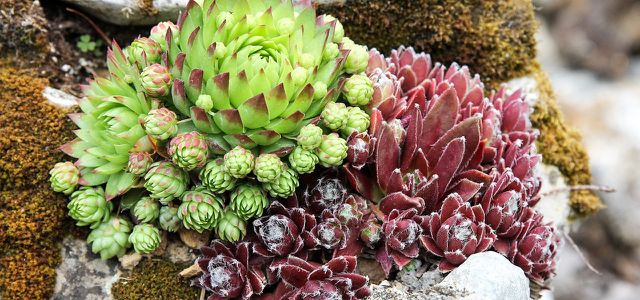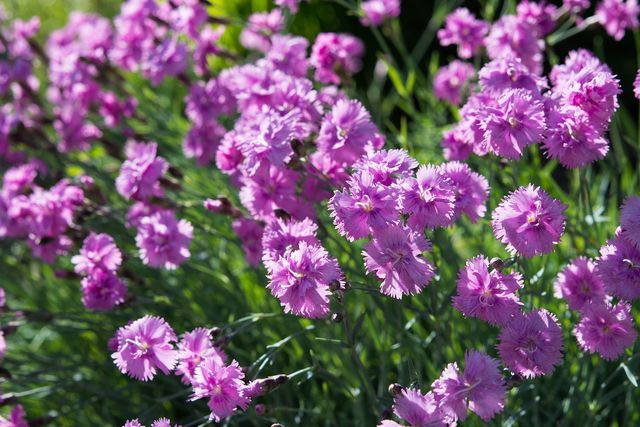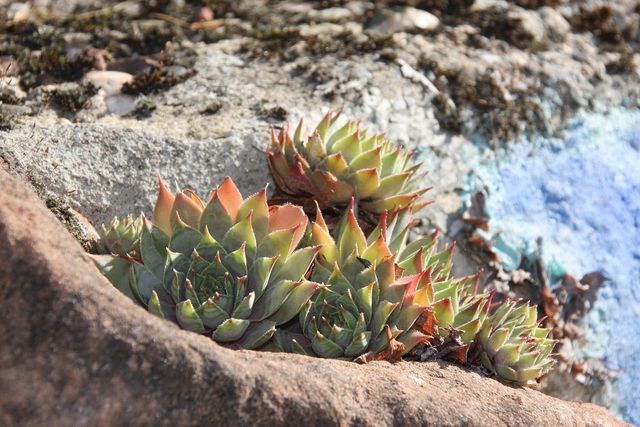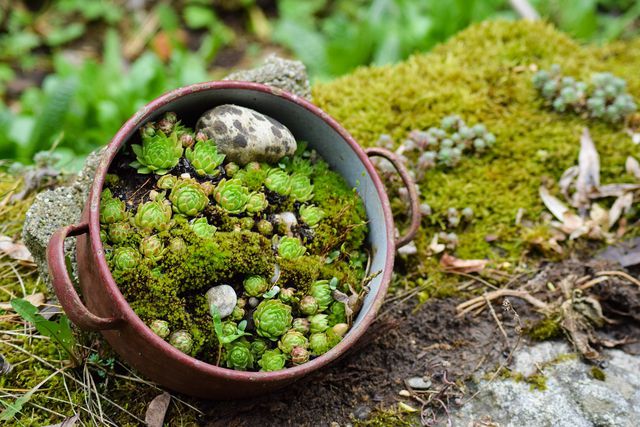
A rock garden is a very special eye-catcher and fits into just about any garden. With our step-by-step instructions, you too can create one!
Contents
Create a rock garden – worth knowing in advance
A self-made rock garden can be a real splendor and acts as an eye-catcher in any garden. Unlike flower beds, rock gardens are planted on barren, stony and uneven ground. The rock garden is thus made to resemble a mountain landscape.
In a self-made rock garden, alpine plants feel especially at home. These are often robust and defy wind and weather. A rock garden is therefore also well suited for people who do not want to invest too much time in gardening. It requires relatively little maintenance.
Creating a rock garden – the right location

Before you create your own rock garden, you should think about the right location:
Choose a spot that faces the sun. An orientation to the south or southwest is ideal.
A site with a slight slope is good, so that the water can drain off well. Waterlogging is detrimental to alpine plants.
If there is no natural slope in your garden, you can easily create one yourself – for example by adding gravel, soil or rubble.
If you prefer a rock garden at ground level, you should drain off the excess water later with a drainage system.
By the way, even if you don’t have a large garden, you don’t have to do without a rock garden. A miniature rock garden can fit in just about any garden.
Create a rock garden: step-by-step instructions

Once you’ve found a suitable spot for your rock garden, you’re ready to get started:
Step 1:
Roughly demarcate the area of your future mountain biotope and excavate the entire soil to a depth of a good 30 centimeters. Here you should carefully remove weeds and deep-seated roots.
In order not to stress your young plants in the beginning, you should now place a weed protection on the excavated area. Well suited and biodegradable are mats made of hemp (e.g. at** Amazon).
After two to three years the mat will have decomposed. By then, your plantlets will be stable enough to fend for themselves against weeds.
Unless you are planting your garden on a slope, you should then prepare a natural drainage system to allow rainwater to run off: To do this, pour a hand-width layer of pebbles or chalk chips over the entire area. The water will later collect in the cavities and gradually flow back into the soil via the hemp mat, without leaving the roots of your stone plants standing in water.
Step 2:
Now generously backfill the area with stony soil, gravel or rubble. This will ensure that even the deeper roots of your mountain plants can root into the barren soil, leaving the more nutrient-rich garden soil underneath.
Once you’ve finished filling in the area, you can begin to design the small mountain landscape just the way you like it: Arrange some large stones and boulders into valleys and hills to create your own garden mountains. Start with the largest stones and fill in any gaps with smaller stones or gravel.
Step 3:
Before planting the young plants in the rock garden, let your newly created area sit unplanted for a few days.
During this time, precipitation and wind will ensure that individual elements settle and solidify properly.
Step 4:
Now it’s time to plant! Think in advance about how you want to arrange your stone plants. Be sure to find out about their respective growth heights. Always place taller plants behind lower groundcovers so that the smaller ones don’t have their light taken away. The selection of plants for the rock garden is vast – so get inspired:
- Alpine Aster
- Blue rue
- Gentian
- Stonecrop
- Fuchsia
- Mountain thyme
- Bellflowers
- Houseleek
- Cat’s-foot
- Cherry laurel
- Creeping pasque flower
- Lampbush grass
- Lavender
- Carnations
- Ribbon flowers
- Butterfly bush
- Shrub rose
Create rock garden – tips and creative ideas

Evergreen plants
Plant some evergreens in your rock garden at irregular intervals. This way you can ensure that it remains an eye-catcher even in winter.
Evergreen rock plants include such things as:
- Alpine azalea
- Hanging willow
- Creeping juniper
- Scots pine
- Nest spruce
- Dwarf conifer
- Dwarf pine
- Romantic rock garden
A densely planted rock garden is a colorful sight. To make it extra special, why not put a sculpture in it? Wild growing plants that will later surround your sculpture will give your garden a special look. Old clay pots, vases, or driftwood are also ideal for housing your stone plants.
Zen stone garden
Do you prefer minimalism? Then create your rock garden according to the Zen model. Arrange the boulders into shapes and patterns and always leave enough free space between them, which you simply fill with gravel or sand. This way you can make your rock garden a place of peace. You can also install a small fountain in the middle. This is not only visually eye-catching – its gentle splashing also has a calming effect.
Maintain rock garden
No matter how you design your rock garden, it is always low maintenance. Water moderately during dry periods (summer and winter) and never let the soil dry out completely. You should also fertilize your rock plants only moderately: provide them with mineral fertilizer or home-made organic fertilizer in spring.
You should stop fertilizing in the fall. Also make sure that moss does not spread too much in your rock garden. It may look pretty on the larger stones, but as soon as it encroaches on the plants, it threatens to smother them. Therefore, remove the moss from your bed regularly.

